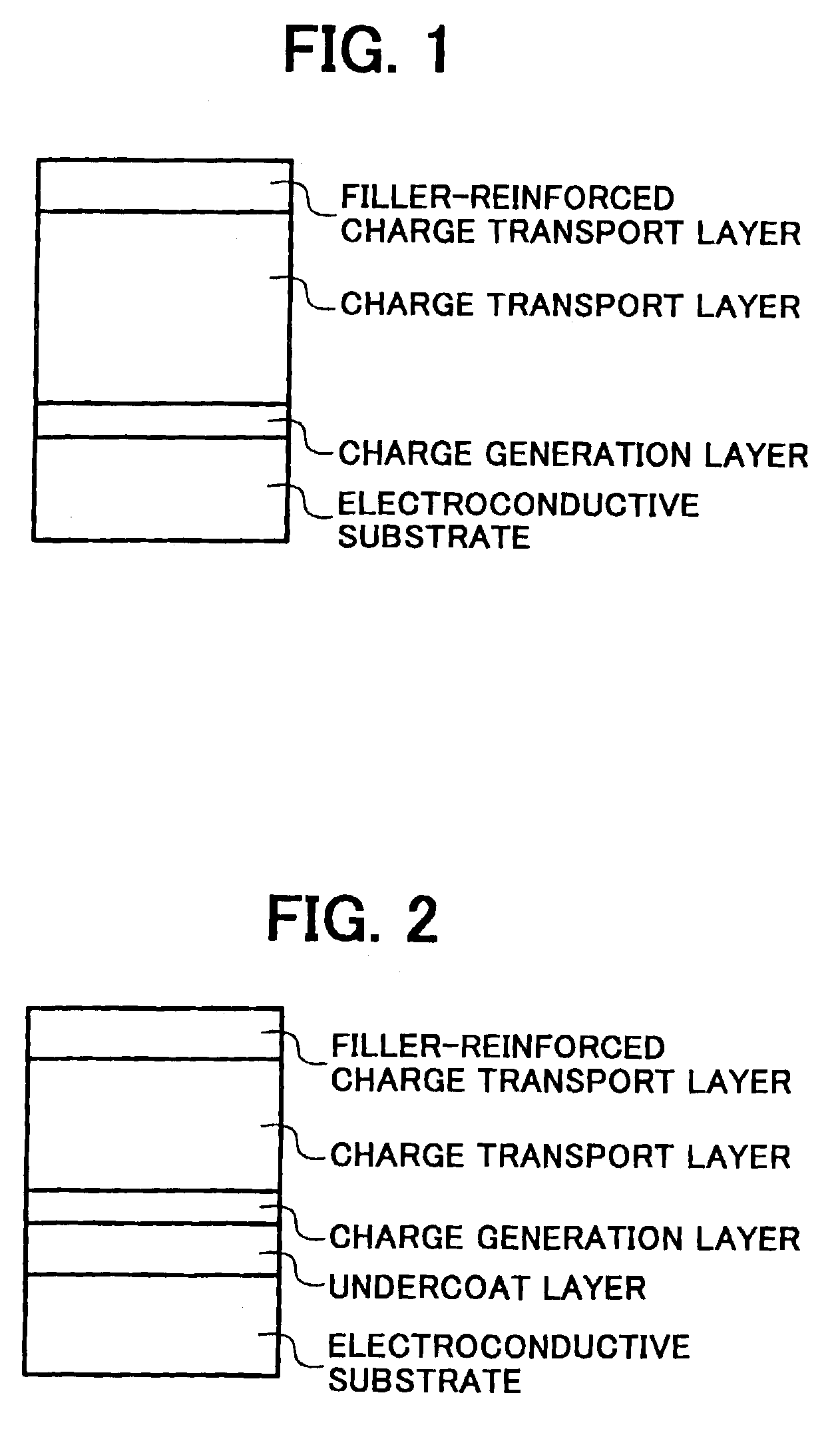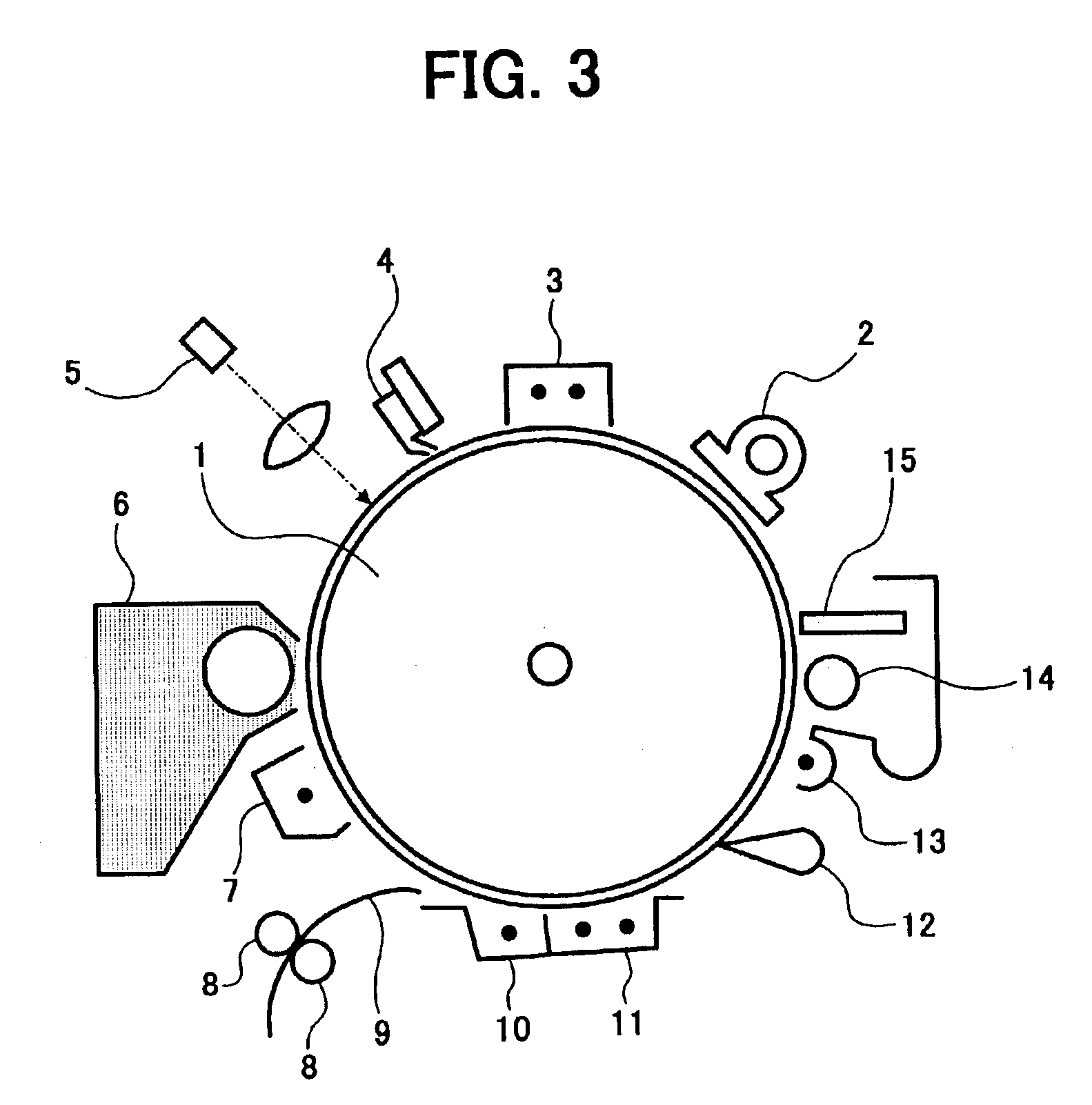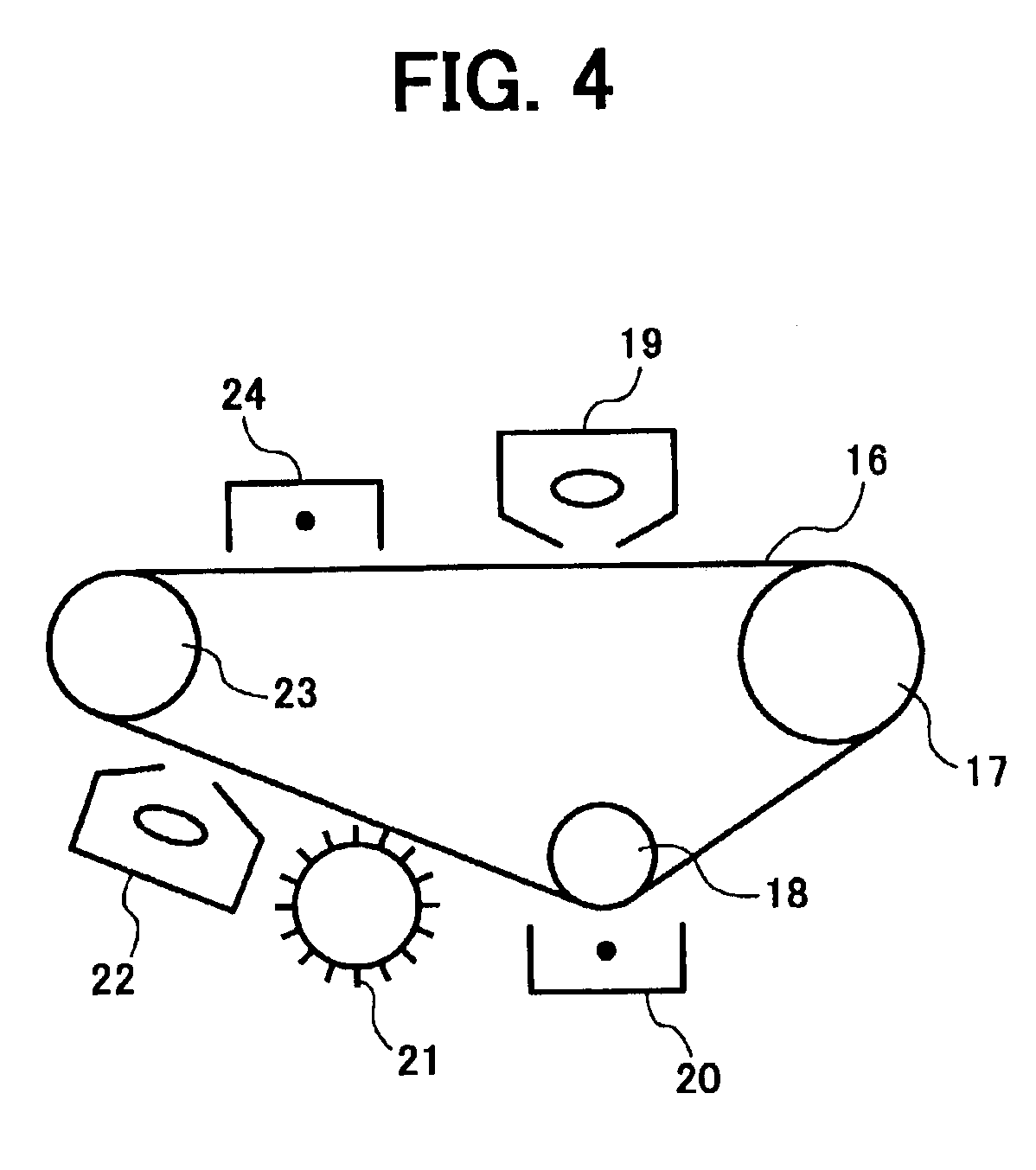Electrophotographic photoreceptor and image forming apparatus using the photoreceptor
a photoreceptor and photoreceptor technology, applied in the field of electrotrophotographic photoreceptors, can solve the problems of deterioration of the charge potential and photosensitivity of the resultant photoreceptors, background fouling, deterioration of the resultant image density and quality, etc., to achieve high-quality image production, high durability, and high-speed printing
- Summary
- Abstract
- Description
- Claims
- Application Information
AI Technical Summary
Benefits of technology
Problems solved by technology
Method used
Image
Examples
example 1
The following materials were mixed and dispersed in a ball mill for 12 hrs to prepare an undercoat layer coating liquid:
Alkyd resin15(Bekkolite M6401-50 from Dainippon Ink &Chemicals, Inc.)Melamine resin10(Super Bekkamin G-821-60 from Dainippon Ink &Chemicals, Inc.)Methyl ethyl ketone150Titanium oxide powder90(Tipaque CR-E1 from Ishihara Sangyo Kaisha, Ltd.)
The thus prepared undercoat layer coating liquid was coated on a cylindrical aluminium substrate having an outer diameter of 100 mm by a dip coating method, and the coated liquid was dried at 30° C. for 20 min to form an undercoat layer having a thickness of 3.5 μm on the substrate.
Polyvinylbutyral resin5(S-lec HL-S from Sekisui Chemical Co., Ltd.)2-butanone150Titanylphthalocyanine8having XD spectrum shown in FIG. 7
Further, 250 parts by weight of 2-butanone were included in the mixture and the mixture was dispersed for 3 hrs. The thus prepared CGL coating liquid was coated on the undercoat layer by a dip coating method, and the l...
example 2
The procedures of preparation and evaluation for the photoreceptor in Example 1 were repeated except that the thicknesses of the CTL and filler-reinforced layer were changed to 10 μm and 3 μm respectively, and that the potential of non-irradiated part of the photoreceptor was changed to −700 V.
example 3
The procedures of preparation and evaluation for the photoreceptor in Example 1 were repeated except that the thicknesses of the CTL and filler-reinforced layer were changed to 15 μm and 3 μm respectively, and that the potential of non-irradiated part of the photoreceptor was changed to −600 V.
PUM
 Login to View More
Login to View More Abstract
Description
Claims
Application Information
 Login to View More
Login to View More - R&D
- Intellectual Property
- Life Sciences
- Materials
- Tech Scout
- Unparalleled Data Quality
- Higher Quality Content
- 60% Fewer Hallucinations
Browse by: Latest US Patents, China's latest patents, Technical Efficacy Thesaurus, Application Domain, Technology Topic, Popular Technical Reports.
© 2025 PatSnap. All rights reserved.Legal|Privacy policy|Modern Slavery Act Transparency Statement|Sitemap|About US| Contact US: help@patsnap.com



